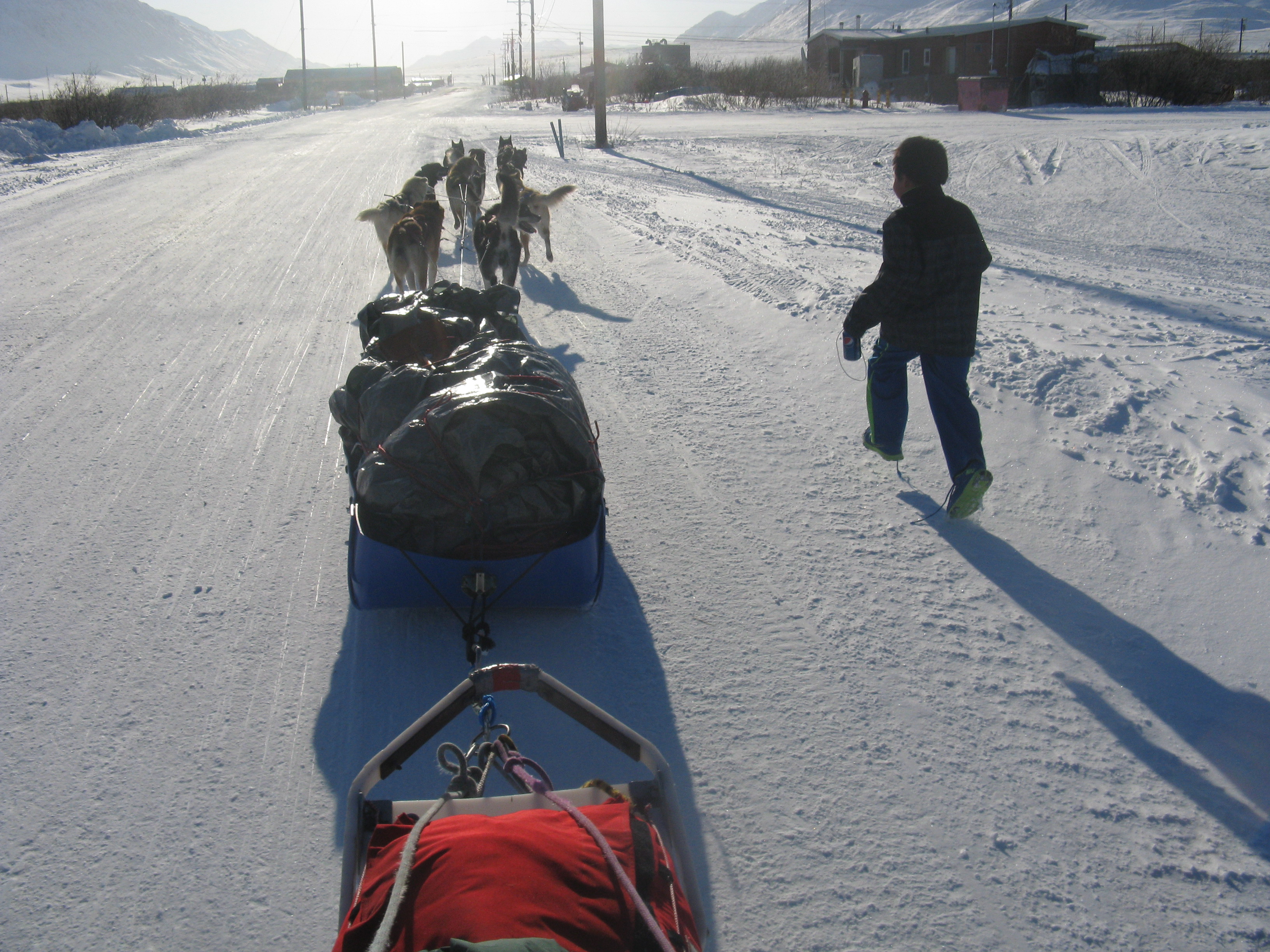As we mentioned in our pre-trip blog earlier this winter, our trip to Gates of the Arctic National Park and Preserve (GAAR) was special. It is not often that the Denali NPS sled dogs leave our 6 million acre park and go elsewhere in Alaska. However, there are times when it makes perfect sense for us to partner with other parks and support projects occurring in other wilderness areas. This partnership presented a unique opportunity for us to help raise awareness of the letter and spirit of The Wilderness Act, raise awareness of another premier wilderness park in Alaska, and of course, raise awareness of just what our sled dogs can do when used as the "minimum tool" for project work in designated, capital 'W', Wilderness in Alaska.
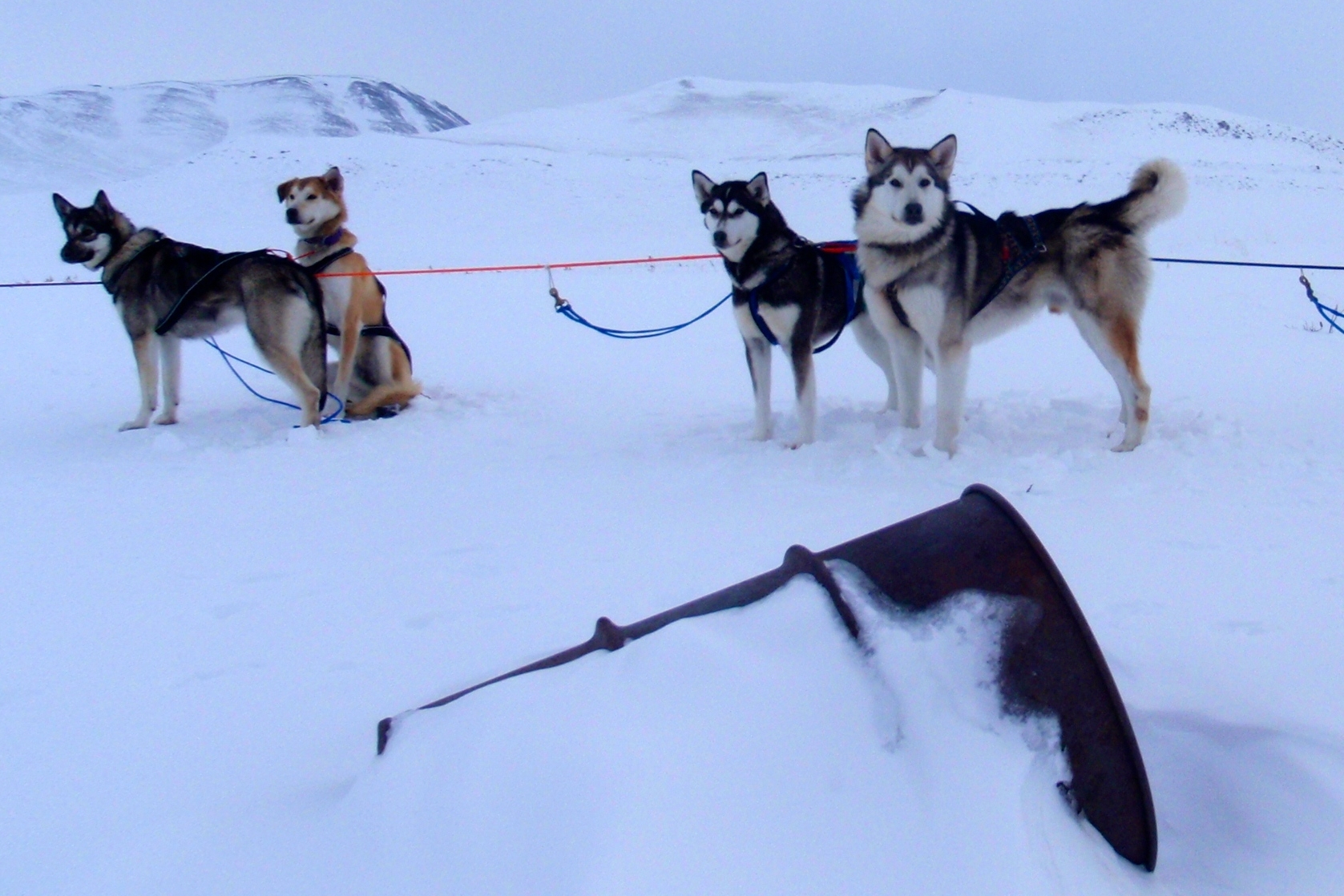
Sled dogs and one of the barrels removed from the Wilderness (NPS photo J. Raffaeli)
Before we left we promised we would tell you everything about this special trip when we returned. Reflecting on a journey is always a challenge. How do you describe to someone who wasn't there what the place looked like and felt like? How do you capture the moments of fleeting beauty or high intensity in a story or a photograph? Most of all, how do you summarize how the experience has changed you and how you see the world differently now?
The pre-trip anticipation and logistics are always a fun and exhilarating for me. I love the planning, the studying of maps, the dreaming of where to go and how to get there. I even love the details and numbers of how much food to pack, what kind of first aid and repair equipment do we need, what unforeseen circumstances do we need to prepare for, etc. Of course, I also love the journey itself. I even love the challenges and hard times along the way. I always say to my co workers, "The hardest days on the trail are still better than the best days in the office." Life on the trail is simple and distilled to the pure essence of being.
Post trip feelings are a bit more mixed for me. There is always a sense of accomplishment, the joy of the journey and adventure, the crisp memories, the newly formed strong bonds with traveling companions, both human and canine, created by the shared experiences and lessons learned along the trail. Along with these happy emotions is always a bit of sadness due to the completion of a dream so long in the making. Such was certainly the case when we returned home from Gates of the Arctic (GAAR).
![]()
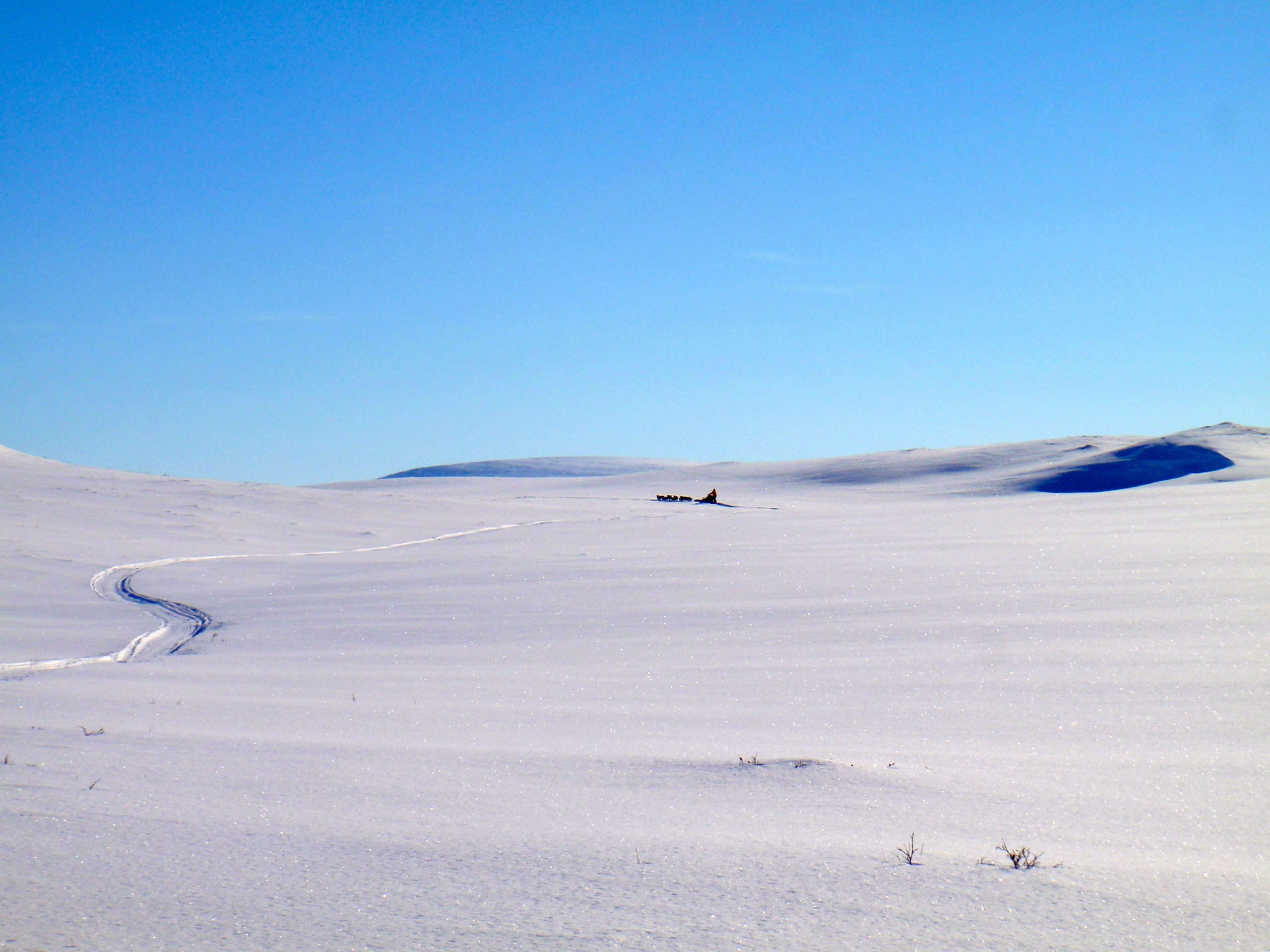
Dog team traveling in the vast, white snow covered plains (NPS photo J. Raffaeli)
The only way you can measure Alaska is with your own breath -Ed Zahniser
So true. The only way to begin to know this land is to experience it firsthand, to have its vastness take your breath away. The endless white snow covered plains of the arctic do not fit into a panoramic photo. The true vastness of this place is three dimensional, all encompassing. You have to stand in the middle of it all to realize how big it is and how small you are in comparison. That feeling of "Where will we set up camp and sleep tonight when there isn't a willow to be seen for miles?" just doesn't hit until you are standing on the back of a dogsled hundreds of miles from anywhere and faced with that very question as you feel a biting cold wind picking up. The way to know a place is to immerse yourself in it, to feel it in your tired muscles, to breathe it in deep and have the cold air fill your lungs and your heart. I think this immersion is one of the most important aspects of experiencing wilderness in our increasingly technological society. In a world of internet and emails, satellites, and phones capable of sending instant photos we still need to experience viscerally, not just virtually.
You might protest that the pictures you see in a magazine or on the internet are more beautiful than the ones you could take, but your experience will be beautiful because it is REAL and it is yours. There is a vast difference between admiring someone else's photo and dreaming of the place they captured versus remembering the moment you capture in your own photograph. You will remember not only the scene in the frame, but the 360 degree view. You will remember the smell of the air, the feel of the wind or the snow or the sun on your face. You will remember the feeling of standing there in the midst of all of that beauty. You will remember how you felt about yourself, your traveling companions, your place in this world as you stood there knowing what it took for you to get yourself to that exact place and moment - all the planning, preparation, hard work, challenges overcome, all of it.
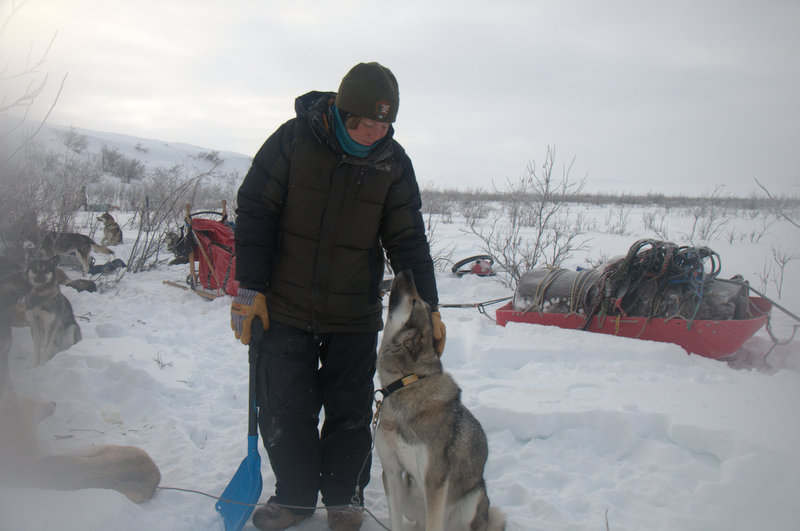
Jayme congratulates Sylvie on a job well done (NPS photo L. Smith)
Sitting back at my desk in the Kennels building a few months after our trip (where does the time go!?) I now recount the successes of a job well done. I am proud of how staff from different parks with different areas of expertise worked together to accomplish so many goals in one patrol. I am proud of our dogs and how they reacted to traveling to an entirely new and unfamiliar place. I am proud of our park managers for having the vision to support this effort to highlight the importance of the Wilderness Act and of parks working together to accomplish a common goal. I am proud of how smoothly our days in the field went thanks to diligent planning and careful daily execution of the plan. In the end, we were able to haul six 55-gallon drums and several other smaller pieces of metal debris out from the Wilderness near May Lake in the northern portion of GAAR. We were able to spend two days with the community in Anaktuvuk Pass talking with youth about our experiences traveling by dog team and listening to village elders share their memories of their own travels by dog team in the area. We were able to cover three hundred miles by dog team over the course of two weeks.
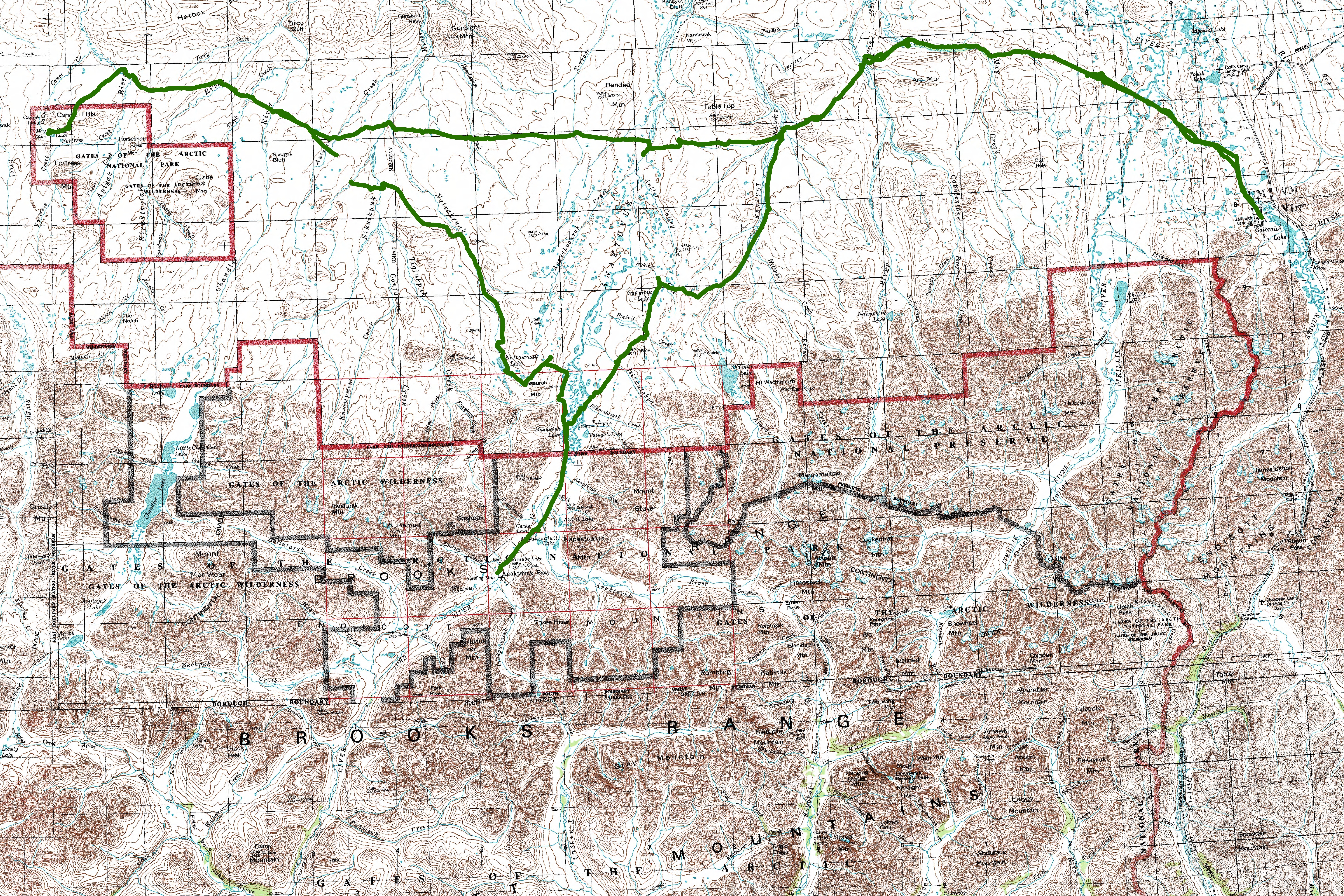
Map of Gates of the Arctic with our actual route in green
Recalling what we did and how we did it is the easy part to put into words. The part I have more trouble with is how to pick out particular moments or stories to share. There were the challenges when we couldn't find the trail as it had been blown away on the winds, or the times there were too many trails as the snowmachiners looped repeatedly searching for the best and safest route for us leaving a wake of figure eights for us and our lead dogs to choose between. There was the joy of seeing a pack of wolves trotting along the ridge as we unloaded the dogs from the truck at Galbraith, or the ones that sat high up on the hill above our camp the first night watching over us as we went about our evening routine. There was a dreamlike sensation of drifting along in a totally new and unfamiliar landscape. How do I adequately describe for you how the sunlight dances and changes every minute and how simultaneously peaceful and powerful the mountains and vast plains felt? How do I capture the magic of the night that we hauled the barrels out from May Lake under the full moon with northern lights dancing overhead and dogs running perfectly, quickly, silently back to camp in the moonlight?
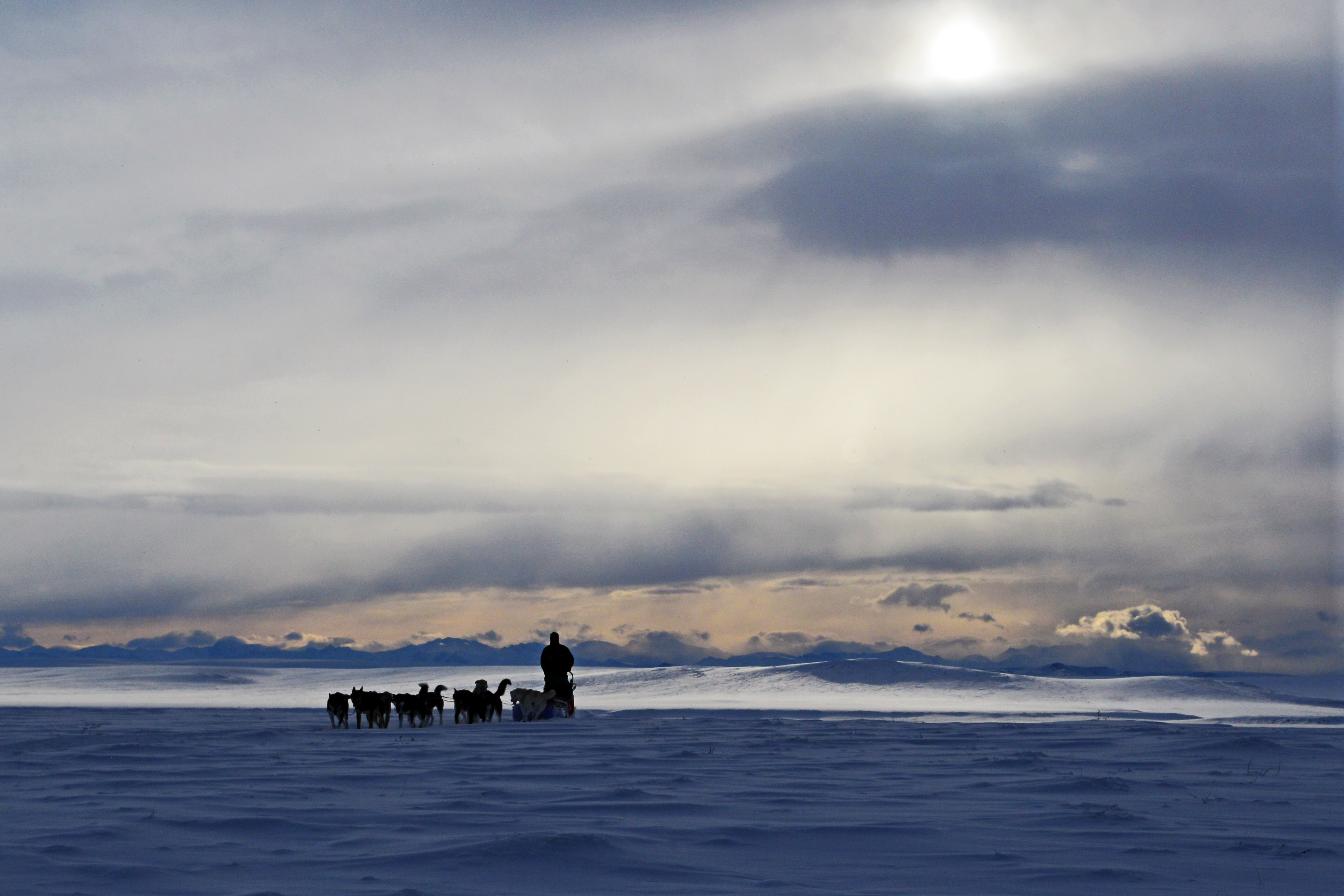
Dog team running (NPS photo J. Dittmar)
Let the beauty we love be what we do. There are hundreds of ways to kneel and kiss the ground. - Rumi
The part I struggle with the most is how to put how we felt and how we changed as a result of our journey into words on paper. I am confident, however, that I am not the first person to face this challenge. The part that requires perhaps an even bigger leap of faith is trusting that others will also be affected by our journey. Our hope with each of our patrols is that we educate and also inspire others to act. Our goal on this trip was not just to clean up the barrels, but to also spend time with the residents in Anaktuvuk Pass.
Those were the immediate goals, but the big picture goal was that this patrol would ignite a spark in the minds and hearts of others to take their own journeys into their own Wilderness areas to experience and create their own feelings and memories. The hope is that someone will hear about this journey, read about this cleanup effort, see a photo or video from the trail and be inspired. The dream is that others will study and learn the letter and spirit of the Wilderness Act and become the next generations of leaders working to preserve our Wilderness areas. The vision is that right now people are planning trips to wilderness areas across the country to have their own life changing experiences out in the midst of the beauty and power of the natural world. It is these ripple effects that we may never see or hear about that really matter to us in the big picture.
Our past and our future
Anaktuvuk Pass youth running alongside dog team in town (NPS photo S. Sample)
To me this trip is a great summary of our changing relationship to the land over time. In 1949, the original seven families settled in the village of Anaktuvuk Pass. Their lives and their traditional ways were entering an era of rapid change. The Nunamiut had been a nomadic people, following their food sources through the year. Settling in Anaktuvuk Pass was just one of many changes in their lifestyle. The elders there have lived through and embraced many changes in the last fifty years. The have shifted from traveling by dog team to the modern use of snowmachines. Airplanes fly regularly in and out of their village that has no road access. Their children attend school. At the same time they continue many of their traditions and old ways too, hunting caribou, gathering berries, sharing stories and songs. They struggle to find balance between tradition and modernization, just like we all do.
It isn't just the Anaktuvuk residents who have experienced major changes in the last 50 years. Our own culture and mindset has also experienced drastic change. In the 1940s and 50s, the Navy and other military units were flying in and out of the area, exploring and studying the land, and setting up long term camps. When they were done they left their empty 55 gallon barrels. It was trash left behind in vast, open lands and I would guess that they felt the cost and effort of removal simply wasn't worth the effort. Meanwhile, in the late 1950s and early 1960s, a group of visionary leaders was hard at work writing and rewriting the Wilderness Act which was ultimately signed in 1964. Fast forward 50 years and we have rangers from two different national parks partnering to clean up the abandoned barrels from designated Wilderness in order to leave the land as the Act describes where 'the imprint of man's work (is) substantially unnoticeable.'
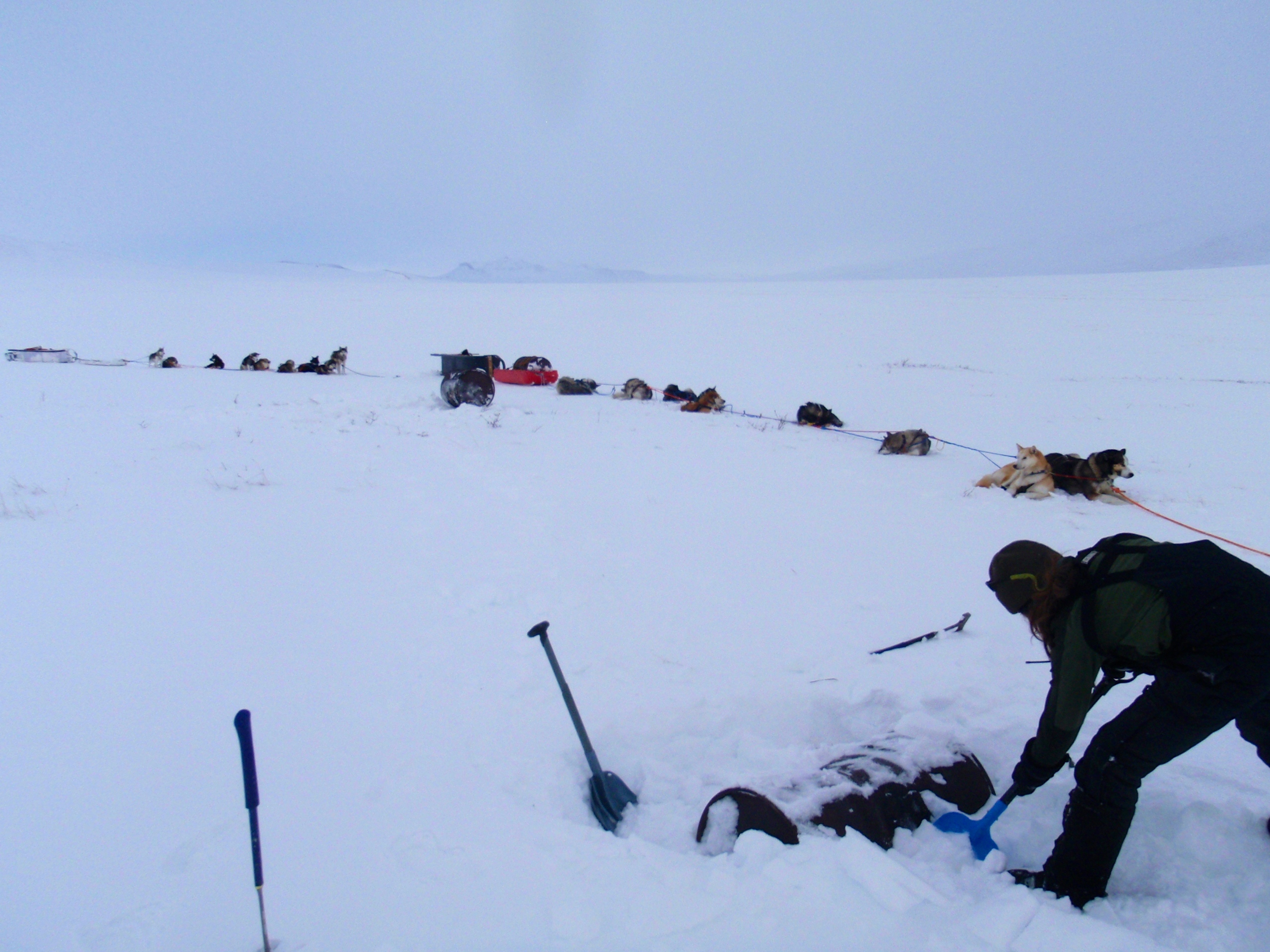
Ranger digging out old barrels in the May Lake area (NPS Photo J. Raffaeli)
I admire and am grateful for those visionaries who had the foresight to write the Wilderness Act 50 years ago. I look at our current relationship with the natural world. I see the same struggles and challenges that we faced in the past continuing in different forms. How do we balance our desire for progress with our need for simplicity? How is the next generation affected by the choices we make today? What threats do our protected Wilderness (or eligible wilderness) areas face today? Who will lead the next generation of visionaries? What do we need and want from our designated Wilderness 50 years from now?
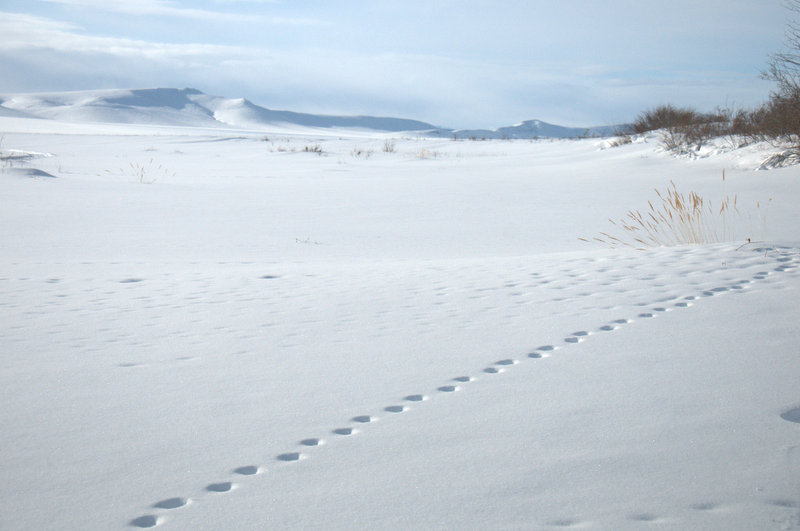
tracks in the snow (NPS photo L. Smith)

